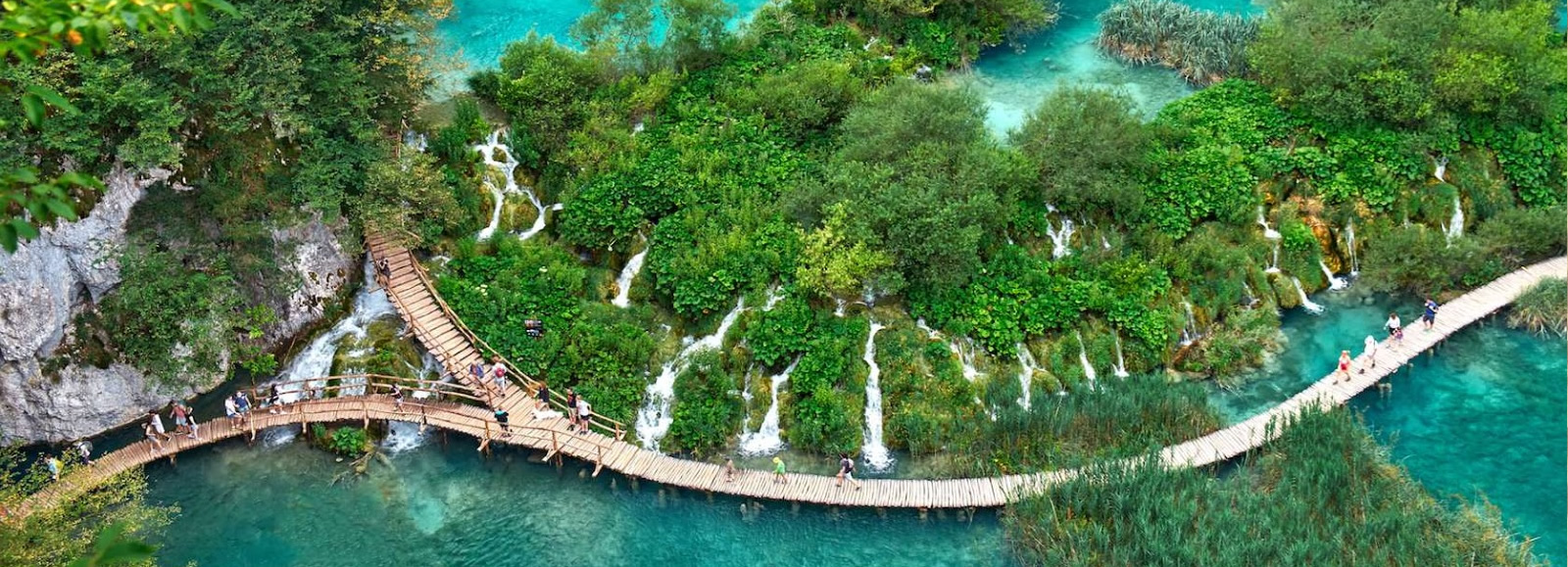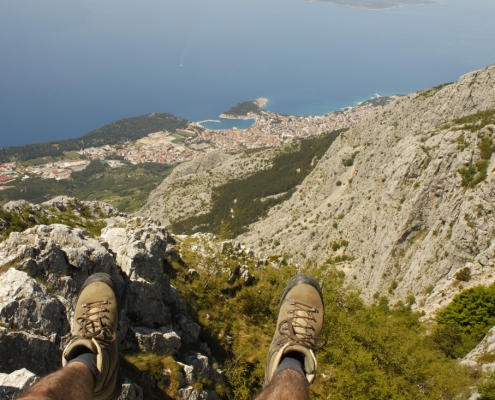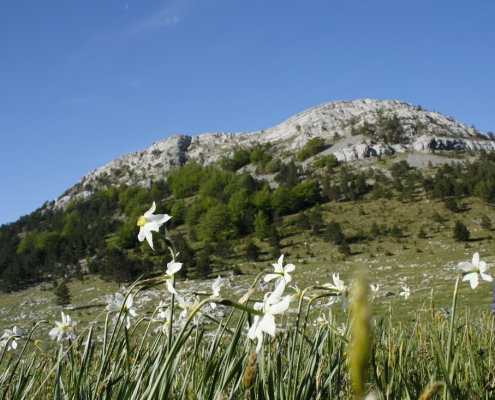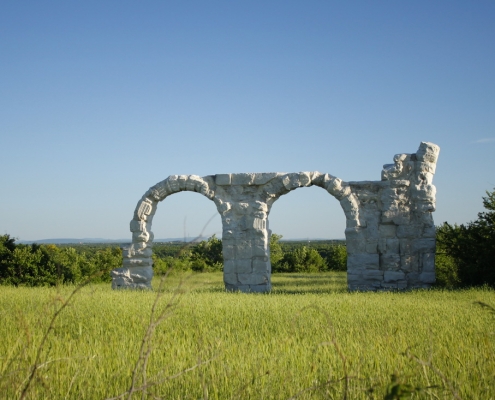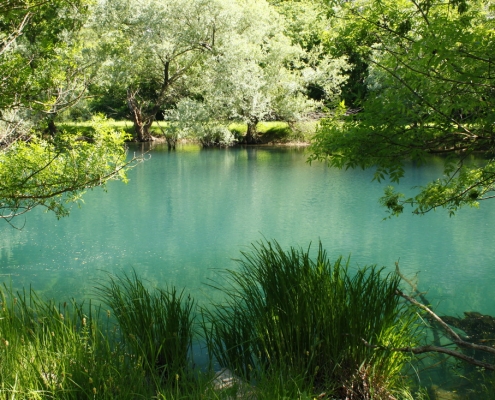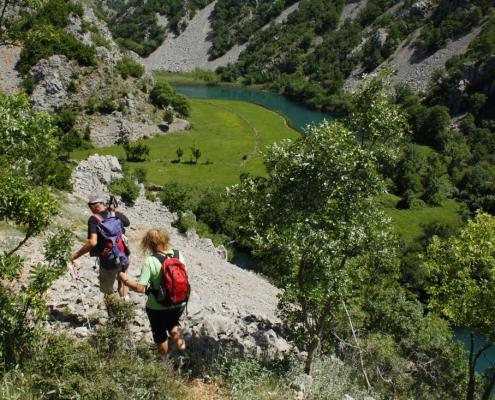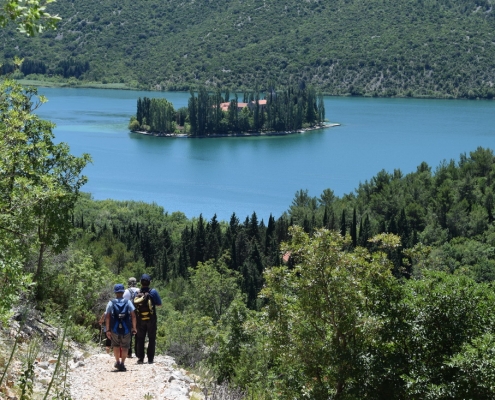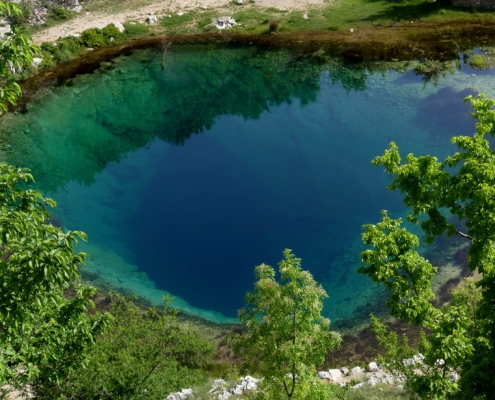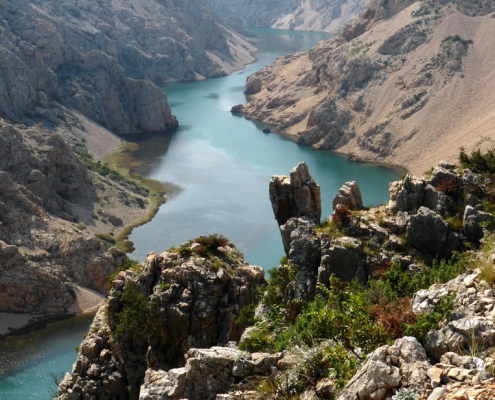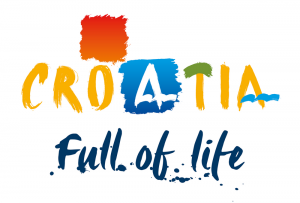
The sound of seagulls, the warm scent of pines and the beauty of the sparkling blue sea greet you at the beginning of a trip full of life.
Pink orchids and Degenia velebitica grow along the side paths, highlighting the green of the meadows where wild horses graze. Absorb the silence of green forests which reflect in the Plitvice Lakes.Explore the karst, hike along the rivers, enter the darkness of the underground karst caves and climb the sacred mountains of Croatia, which reward us with the magnificent view of the Adriatic.
Visit the most beautiful coastal towns, rich in culture and history. Gliding over calm waters, learn the history of Roman colonies, monasteries, emperors, proud kings and the common man. Meet friendly and hospitable hosts who prepare traditional home-cooked meals for you with love.
A journey that fulfills.
Program
Day by day
(Meals: B=breakfast L=lunch D=dinner)
Day 1: Arrival
Individual arrival by plane or car to Zadar, then transfer to our accommodation in Rovanjska, a small village located in a beautiful cove at the foot of Velebit. We have dinner together and get to know the other members of the group and our guide, who explains the itinerary.
Transfer time approx. 0.5 h; Accommodation in a boarding house in Rovanjska; (D)
Day 2: Plitvice Lakes National Park
Today we drive to the Plitvice Lakes National Park. Spectacular waterfalls, crystal clear water of the lakes, with its incredible shades of blue to turquoise green, and Winnetou films have helped Plitvice Lakes to achieve worldwide fame and high visitor numbers. However, we explore the park on a hiking route, which is off the busy paths for the most part. We hike through beautiful primeval forests, sometimes we don’t see another soul, but still we don’t miss the main attractions. In the late afternoon we return to Rovanjska.
Drive 3 – 4 h; Hike approx. 6 h; Ascent 200 m; Descent 200 m; Boarding house in Rovanjska; (BLD)
Day 3: Zadar and Modrič Cave
In the morning, we go into the “underworld” of Velebit, where our guide Marijan, one of the most famous speleologists in Croatia who has the exclusive license for guided tours in Modrič Cave, waits for us. He holds the keys to this fairytale world and guides only the selected small groups to learn about the karst underground. The entrance to the cave is quite narrow, but gradually the corridors widen, and we forget the outside world and time, because Marijan has a lot of stories to tell. There is no artificial lighting in the cave and we explore it with special carbide lamps that give natural light, a unique experience, even if you have already visited larger and more developed caves.
In the late afternoon, we drive to the lively, approximately 2,000 years old town of Zadar, one of the oldest towns in Dalmatia.During the tour, we visit the Church of St Donatus, the Cathedral of St Anastasia, The Gold and Silver of Zadar exhibition and the unique sea organ.
Drive approx. 1 h; Walk 2-3 h; Boarding house in Rovanjska; (BL)
Day 4: Velebit – Sveto Brdo (Sacred Mountain)
After breakfast, jeeps drive us to the Velebit mountain range, at about 900 m above sea level. We hike comfortably across Malo Libinje Plateau, past a small karst spring to Vlaški Grad Shelter. From there, serpentine trails lead to the main ridge and then to high mountain pastures on Sveto Brdo. In spring, wild daffodils, gentian and various types of orchids bloom in the meadows. The peak of Sveto Brdo, 1753 m high, is a perfect vantage point. In good weather conditions, you can see over the open see beyond islands, mountains in Bosnia and our next destination, the peak of Dinara. Treat yourselves, enjoy the view, relax your body and soul and then we return to the starting point following the same path.
Hike approx. 6 h; Ascent 900 m; Descent 900 m; Boardinghouse in Rovanjska; (BLD)
Day 5: Golubić – Kudin most- the Krupa River – Krupa Monastery
Today take the bus to the inland of Dalmatia. Along the way, we stop at a vantage point high above the canyon of the Zrmanja where an Apache village from Winnetou films used to be. The emerald green Zrmanja River meanders through the canyon cut into the rock.
Our trip begins at a small village of Golubić. The path to the Krupa River goes steeply downhill over karst rocks for half an hour. Then we hike along the deep blue river, surrounded by lush green meadows, to the Serbian Orthodox monastery of the same name. In the vast, barren karst landscape, this river valley looks like a fertile oasis. We visit the monastery, maybe even the small museum, before relaxing and eating barbecue in the monastery garden. In the afternoon, we continue to Knin where we will spend the next two nights. Along the way, we make a short stop at the Manojlović Waterfall on the Krka River and we pass the Roman military camp Burnum.
Drive 3 – 4 h; Hike 2 – 3 h; Hotel in Knin; (BLD)
Day 6: Dinara (approx. 1,831 m)
Today we climb Dinara, the highest mountain in Croatia. After an early breakfast, we drive in jeeps along partially adventurous mountain roads to about 1,400 m. At first on well-trodden paths and later on rock, we hike uphill. Again and again we can enjoy wonderful views on the fertile valleys bellow us. After the last climb, we reach the summit. We enjoy the vastness and tranquility of this remote mountain world and the view of Velebit further north and the Adriatic Sea deep below. On the way back, we gather our strengths with a barbecue lunch in a rustic mountain hut. In the late afternoon, we make a short detour to the source of the Krka River, that gave the national park its name and springs under a waterfall.
Drive 3 – 4 h; Hike 4 – 5 h; Ascent 450 m; Descent 450 m; Hotel in Knin; (BLD)
Day 7: Spring of the Cetina River – Krka National Park – Visovac – Roški Slap Waterfall
The first highlight of the day is a visit to the spring of the Cetina River. The clear water of the river rises from a hole explored to the depth of 120 m and sparkles in different shades of blue. Not many tourists know of this place so we can enjoy in its beauty undisturbed. After a short trip to the Pre-Romanesque church of the Holy Salvation in Cetina, we drive to Krka National Park. We take the boat to the monastery on Visovac Island, where we learn about the Franciscan monastery built in 1445. Back on the mainland, we hike through an impressive landscape of water, karst rocks and Mediterranean vegetation to the Roški Slap Waterfall.
After lunch in a typical Dalmatian tavern, we drive over a bridge to the island of Murter. In the afternoon, there is still enough time to relax and take a dip in the warm waters of the Adriatic.
Drive 3 – 3.5 h; Hike approx. 3 h; Jezera Mobile Homes on the island of Murter; (BLD)
Day 8: Šibenik – Split – Makarska
A short bus ride takes us to Šibenik, a picturesque town situated in a deep bay at the mouth of the Krka River. During the walk through the old town, we visit the famous St. James Cathedral (UNESCO World Heritage Site). Via steep stairs and alleys we reach the oldest fortress in the town, St. Anne’s Fortress, from which we can enjoy in the wonderful panoramic view of the town and the fjord-like bay.
We continue to Split, the second largest city in Croatia. The city developed from a Roman imperial palace. We explore narrow streets and ancient walls of the unique complex with a local guide. After a walk on the new promenade, we can bask in the sun in one of the numerous cafés. In the early evening, we reach Makarska, where we spend the next three nights in a boarding house.
Drive approx. 3 h; Walk 2 – 3 h; Boarding house on the Makarska Riviera; (BLD)
Day 9: Biokovo Nature Park: from Vošac to Sveti Jure
We drive into Mount Biokovo, a nature park, via a steep road cut into the rugged rocky landscape. We begin our hike at about 1300 m. We hike through karst, past gnarled pines, mountain flowers and fields embedded in open rock basins to the mountain peak of Vošac. The view from up here, directly over the Croatian Adriatic, takes the breath away. Below us are the islands of Hvar and Brač, further away we can see the Pelješac Peninsula and the island of Korčula. We continue uphill along narrow paths until we reach the highest point of the mountain – Sveti Jure (1,762 m), which locals consider sacred. A typical Dalmatian lunch helps us to regain our strength and wine improves our mood. Fortified, we return to Makarska and we can still take a dip in the Adriatic in the late afternoon. In the evening, we can stroll along the promenade and eat in one of the numerous restaurants right by the sea.
Drive approx. 2 h; Hike 5 – 6 h; Ascent 500 m; Descent 500 m; Boarding house on the Makarska Riviera; (BL)
Day 10: Imotski – Blue and Red Lake
After a leisurely breakfast, we drive through a tunnel to the eastern side of Mount Biokovo. After about an hour, we reach two great karst lakes, Red and Blue Lake. The lakes are sinkholes, deep partially explored holes in the karst. We take a hike around the 250 m high vertical rock face of Red Lake. If you want, you can hike to Blue Lake and take a dip in crystal clear water.
The afternoon and evening in Makarska are leisure time. There is enough time to explore the town, visit a café by the sea or take a dip – an amazing experience with the mighty Biokovo in the background!
Drive approx. 2 h; Hike 2 – 3 h; Ascent 50 m; Descent 50 m; Boarding house on the Makarska Riviera; (BL)
Day 11: Day 11: Boat trip in the Neretva Delta – Pelješac
We continue south along Biokovo until we reach the fertile valley of the Neretva. In a modern archaeological museum in a small village of Vid, we can learn about the history of the Roman colony of Narona and the ancient trading town. Vid is located on the Neretva River, which forms the huge, marshy delta which spreads over almost 100 square kilometers. Numerous branches of the river are home to many animal species, especially water birds, and an important resting place for migratory birds on their way to Africa. At the end of the 19th century, a big part of the delta was drained. There are large fruit and vegetable plantations and even rice is grown in the fields crossed by canals. We take a boat trip through the canals, visit the orchards and fortify ourselves with a hearty lunch in the middle of the delta. In the afternoon, we take the ferryboat to the Pelješac Peninsula and reach our accommodation in Orebić in the early evening.
Drive 4- 5 h; Hotel in Orebić; (BLD)
Day 12: Sveti Ilija
With a local guide, we set off to climb Sveti Ilija, the highest peak of the Pelješac Peninsula. Through fields and forests, with the scent of sage, orchid and pines, we hike to the top to the chapel dedicated to St. Elijah. The whole time, we can see the islands of Korčula, Mljet and Lastovo. In the upper part of the mountain, the terrain is somewhat rocky, but the marked path is easy to master. At the top, we have one of the best panoramic views in the southern Adriatic. We can see Biokovo, the place where we had fun a couple of days ago. On the last “sacred” mountain, it is not impossible to see wild horses who will curiously observe us from the safe distance.
We descend on the other side of the mountain and enjoy in Dalmatian specialties.
Drive 2 – 3 h; Hike 4 – 5 h; Ascent 400 m; Descent 950 m; Hotel in Orebić; (BL)
Day 13: Ston and Dubrovnik
On our way to Dubrovnik, we stop briefly in Ston in order to explore the longest defensive wall in Europe. In the afternoon, we explore Dubrovnik, a UNESCO World Heritage Site and the “Pearl of the Adriatic”.
The Old Town is a unique open-air museum: a network of narrow streets and stairs, historic city gates and bastions, cozy squares, medieval churches, monasteries and palaces. On a city tour we learn a lot about the history of Dubrovnik, afterwards there is enough time to stroll. On the way back to our hotel, we make a short detour to the viewpoint on Srđ to enjoy a bird’s eye view of the town. Perhaps there is still enough time to jump into the sea before our last dinner together in Cavtat. You will surely remember the magnificent landscape of Dalmatia in the light of the evening sun.
Drive approx. 3 h; Walk 1 – 2 h; Hotel near Dubrovnik; (BD)
Day 14: Return
Depending on the time of the return flight we still have enough time to take a dip in the sea before we go to the airport and finish this eventful journey.
(B)


